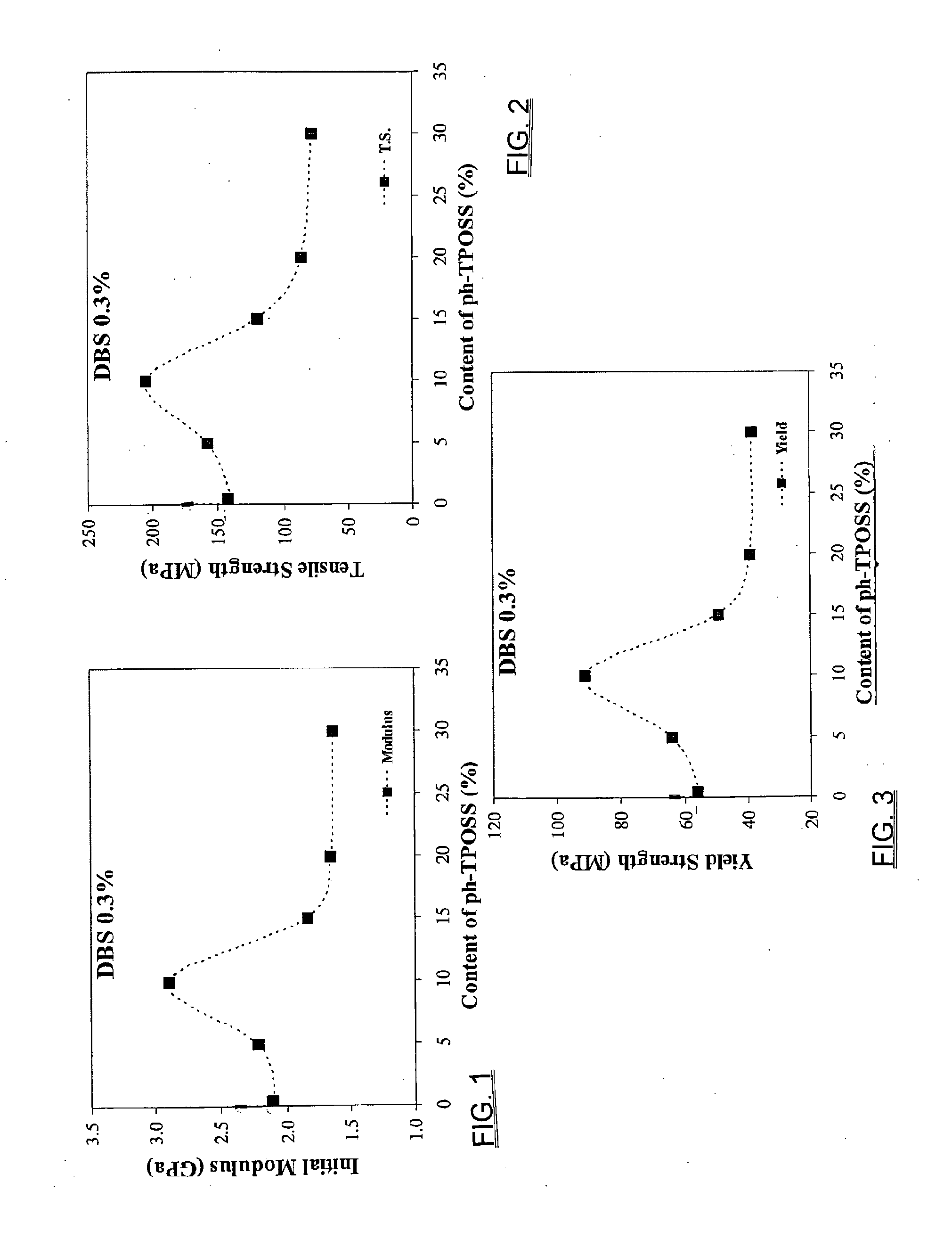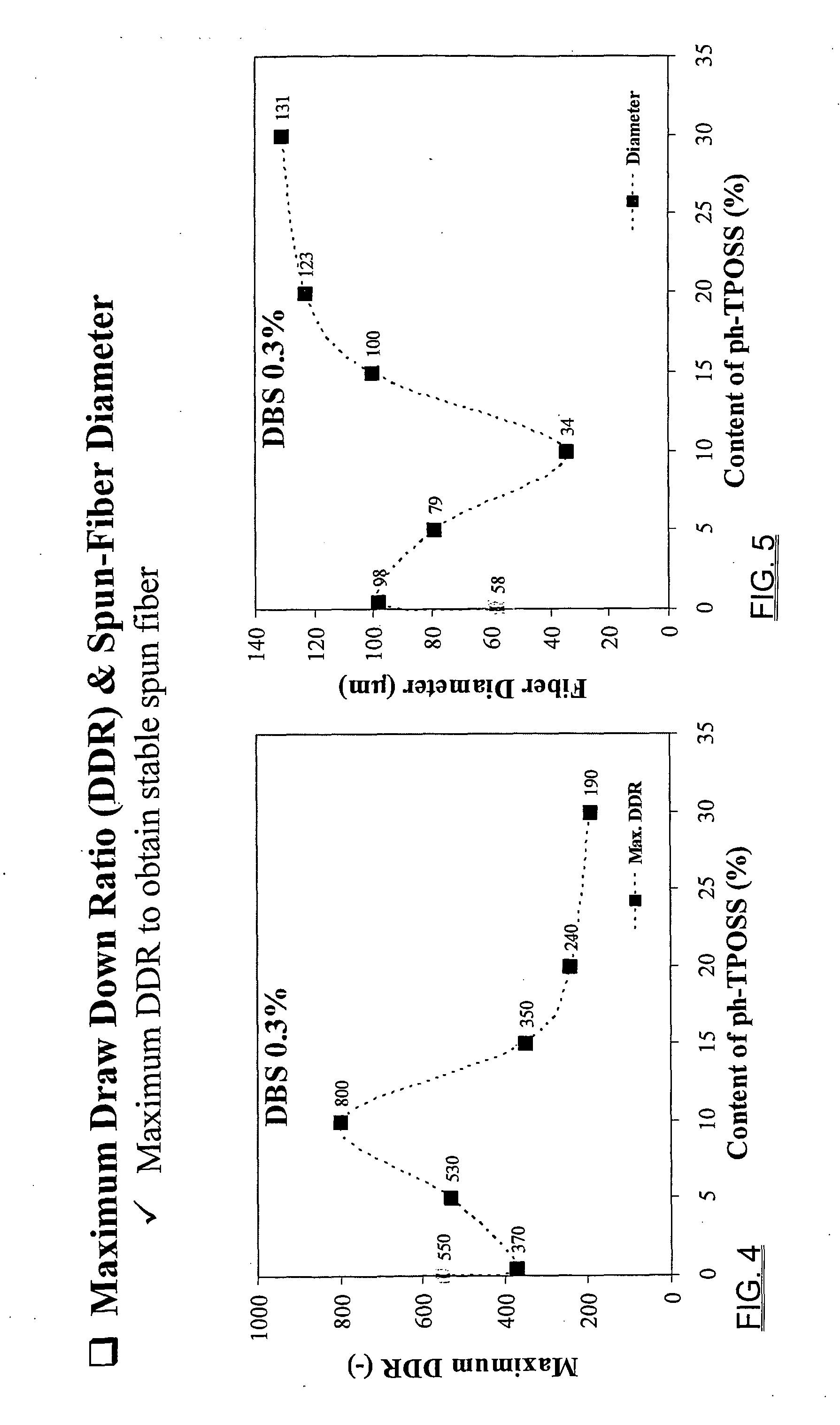Crystalline polyolefin blend comprising polyhedral oligomeric silsesquioxane nanoparticles
a technology of polyhedron and silsesquioxane, which is applied in the field of polyolefin formation, can solve the problems of poor dispersion of the top-down approach, inability to generate colloidal filler particles by in-situ chemical reactions, and limited spinning speed of polypropylene fibers, so as to improve the polyolefin. the effect of good polyolefin clarity and higher denier fibers
- Summary
- Abstract
- Description
- Claims
- Application Information
AI Technical Summary
Benefits of technology
Problems solved by technology
Method used
Image
Examples
examples
[0025]The invention will be better understood by reference to the following examples which serve to illustrate the invention, but not to limit the same.
[0026]In each of the four examples set forth in Table 1, the indicated amount of the various components were added to 100 parts by weight of pure polypropylene. An internal mixer, Brabender Plasticorder, type DR-2072, No. 0262 / PE, manufactured by C. W. Brabender was used for mixing PP polymer with different types of POSS. The capacity of this mixer is 387 cm3 in one batch. The rotors, placed in the mixing bowl horizontally, turn in counter directions. A batch mixing time of 10 min and an angular speed of 70 rpm was used for preparation of the materials. The mixed materials were crushed into granules and melt-spun into fibers using a capillary rheometer (Instron) and a take-up device. The molten polymer was melt-spun as a monofilament through a capillary die (diameter: 1.6 mm, length-to-diameter ratio 19.3). The filaments were spun an...
PUM
| Property | Measurement | Unit |
|---|---|---|
| melting point | aaaaa | aaaaa |
| diameter | aaaaa | aaaaa |
| temperature | aaaaa | aaaaa |
Abstract
Description
Claims
Application Information
 Login to View More
Login to View More - R&D
- Intellectual Property
- Life Sciences
- Materials
- Tech Scout
- Unparalleled Data Quality
- Higher Quality Content
- 60% Fewer Hallucinations
Browse by: Latest US Patents, China's latest patents, Technical Efficacy Thesaurus, Application Domain, Technology Topic, Popular Technical Reports.
© 2025 PatSnap. All rights reserved.Legal|Privacy policy|Modern Slavery Act Transparency Statement|Sitemap|About US| Contact US: help@patsnap.com


